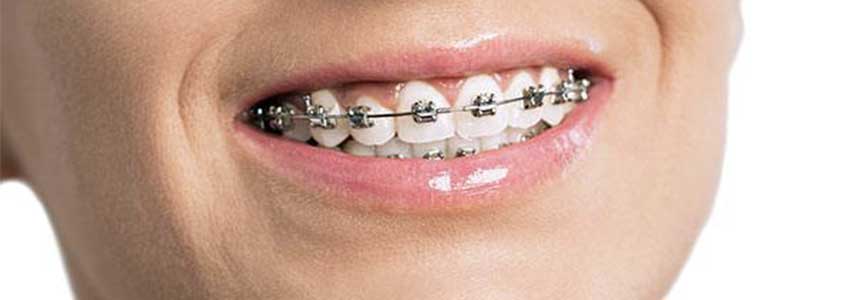The dental appliance is one of the main orthodontic therapies, in particular the fixed orthodontic appliance has the function of correcting multiple pathologies related to dental malocclusion.
How does the dental appliance work?
The orthodontic appliance performs its therapeutic function through the attachments, technically called brackets, which can be made of metal, ceramic or a specific resin, to which metal wires with elastic properties are connected.
The attachments are applied to the tooth surface and each attachment is connected to the next and previous through the elastic metal wire.
This structure allows to generate traction forces that bring the teeth back to their correct position, eliminating malocclusion problems.
Usually dental braces are prescribed to patients who present with:
- protruding teeth;
- crooked teeth;
- dental overcrowding;
- non-alignment between the arches.
The duration of therapy through the application of the orthodontic appliance can have different times depending on the specific clinical case.
Can the dental appliance cause collateral damage?
By relying on an excellent dental center and a dentist who has certified skills for the application of brackets and the entire structure of the orthodontic appliance, many possible complications can be avoided.
Professionalism and compliance with periodic checks can safeguard any damage to the surface of the enamel, including: discoloration, i.e. color alterations, and abrasions.
The real danger for those wearing braces for teeth, however plaque. In fact, in the presence of a dental appliance, neglecting one’s oral hygiene could represent a serious damage to health.
The presence of the attacks makes thorough cleaning difficult, for this reason it is important to dedicate the right time and to associate home oral hygiene with a deep cleaning by the dentist.
During orthodontic therapy periodic checks should never be postponed or ignored because they help to identify immediately the onset of a gum infection or a caries.
During the period in which a tooth appliance is worn, complementary fluorine-based care may be associated to strengthen the tooth enamel.
If there are any anomalies on the various components of the orthodontic appliance, such as elastics or attachments, it is necessary to contact your dentist as soon as possible. You should never work directly on the dental appliance.
At the end of the therapy it is important that the appliance is removed by a specialist with proven experience in the orthodontic sector, incorrect maneuvers could damage the teeth and tissues permanently.
Not all patients can apply a dental appliance immediately after the diagnosis of an orthodontic problem. In fact, in the presence of other diseases of the oral cavity such as caries, gingivitis or periodontitis, it is advisable to start orthodontic therapy only after treating previous diseases. This foresight will avoid serious complications.


















